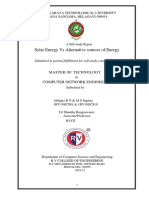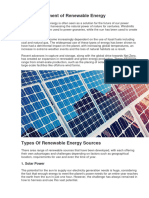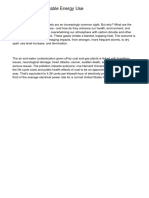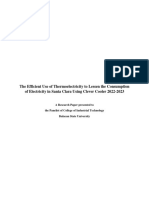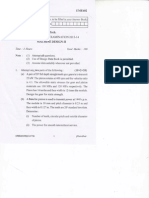0% found this document useful (0 votes)
89 views13 pages7 Tech Rep
This technical report analyzes and designs a hybrid renewable energy power plant. It begins with an introduction that discusses renewable energy sources like sunlight, wind, rain, tides, and geothermal heat. It notes the advantages of renewable energy include being replenished naturally, requiring lower maintenance than fossil fuels, and providing long-term savings. The disadvantages include higher upfront costs, intermittency of sources, need for improved storage, and some geographic limitations. The report also discusses the environmental impacts of various renewable energy sources and the need to invest in renewable over fossil fuels to reduce pollution and greenhouse gas emissions.
Uploaded by
Fe MonteronCopyright
© © All Rights Reserved
We take content rights seriously. If you suspect this is your content, claim it here.
Available Formats
Download as PDF, TXT or read online on Scribd
0% found this document useful (0 votes)
89 views13 pages7 Tech Rep
This technical report analyzes and designs a hybrid renewable energy power plant. It begins with an introduction that discusses renewable energy sources like sunlight, wind, rain, tides, and geothermal heat. It notes the advantages of renewable energy include being replenished naturally, requiring lower maintenance than fossil fuels, and providing long-term savings. The disadvantages include higher upfront costs, intermittency of sources, need for improved storage, and some geographic limitations. The report also discusses the environmental impacts of various renewable energy sources and the need to invest in renewable over fossil fuels to reduce pollution and greenhouse gas emissions.
Uploaded by
Fe MonteronCopyright
© © All Rights Reserved
We take content rights seriously. If you suspect this is your content, claim it here.
Available Formats
Download as PDF, TXT or read online on Scribd
/ 13































